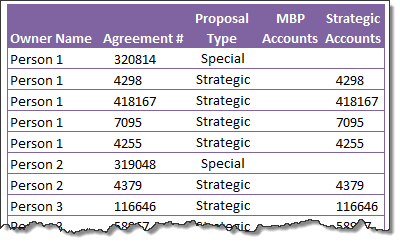All articles with 'distinct count' Tag
Distinct count in Excel pivot tables

Ever wanted to count distinct values in your pivot tables? Something like above:
Let’s say you have store sales data. Several products are sold on each day. When you make a pivot table from this data and add product count, Excel counts all products. But we want to see just the distinct count (ie if there is a duplicate product in a day, we want to count it just once).
Here is a simple trick to add distinct count to Excel pivot tables easily.
Continue »10 things that wowed me in Excel 2013

As you may new, the newest version of Excel is out for a while. I have been using it since last 6 months and enjoying it. Today, lets understand 10 things in 2013 that wowed me (and probably you too).
Continue »Distinct Count & Blanks – Power Pivot Real Life Example

When it comes to analyzing business data, managers are always asking, “so how many distinct x each y is doing?”
And that sends us, data analysts & reporting professionals running from pillar to post figuring out the best way to do it.
- We can use variations of SUMPRODUCT, COUNTIFS etc, but the methods are not flexible..
- We can use VBA, but it would become slow as you add more data.
- We can use Pivot tables, but it only gives half of what we want ie each y part, but not distinct count of x.
- We might as well shave our head with a shovel before manually counting values.
And that brings us to 2 distinctly simple solutions:
- Using Power Pivot & Excel 2010
- Using regular pivot tables in Excel 2013
Today, lets talk about these 2 approaches & see why they are so better than anything else for distinct count situations.
Continue »

